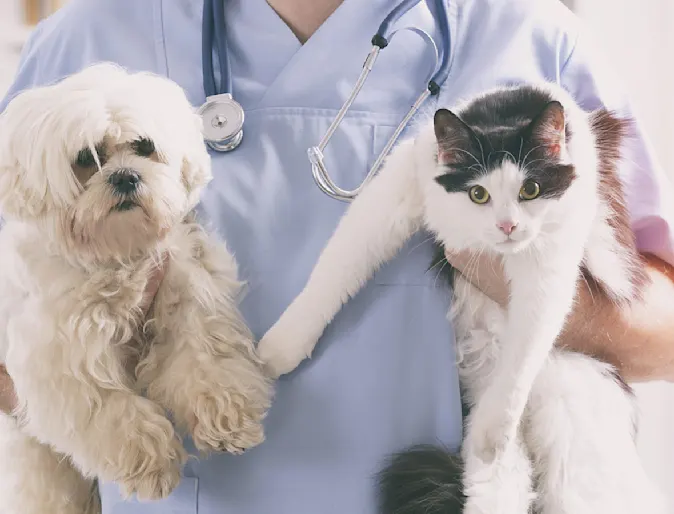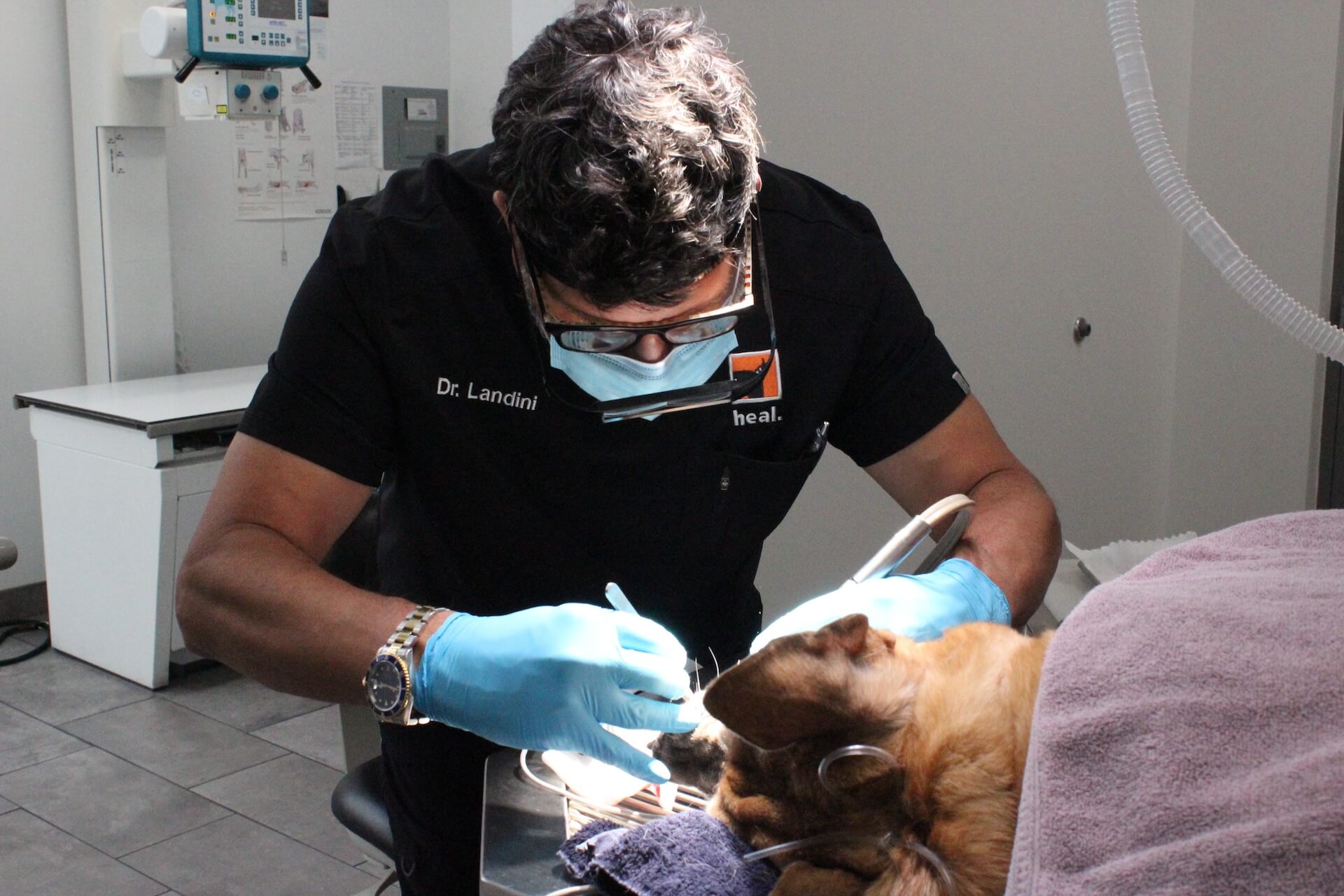Complete Pet Owner’s Guide to Emergency Visits at a 24 hour vet near me
Complete Pet Owner’s Guide to Emergency Visits at a 24 hour vet near me
Blog Article
Why Animal Rehabilitation Is Critical: the Advantages of Veterinarian Providers for Your Pet dog's Recovery
Animal rehab is a vital part of recovery for pet dogs encountering injuries or impairments. Veterinary solutions provide vital assistance via customized rehabilitation strategies that address specific needs. These strategies frequently include pain administration, physical therapy, and nutritional guidance. Comprehending the various facets of pet rehab can illuminate its significance in enhancing recovery end results. What details benefits do these solutions provide, and how can they change a pet's healing trip?
Comprehending Pet Rehab
Animal rehab includes a variety of therapeutic practices targeted at bring back the health and wellness and functionality of injured or handicapped animals. This area incorporates different strategies, consisting of physical treatment, hydrotherapy, and work therapy, customized to meet the details needs of each pet. Rehab professionals evaluate a pet's condition, creating individualized therapy strategies that might involve workouts to reinforce muscle mass, enhance movement, and enhance total wellness. The procedure not only focuses on physical recovery yet also addresses psychological and behavioral facets. Pets often experience stress and anxiety and anxiety following an injury, making mental health and wellness factors to consider important in rehab. By developing a helpful atmosphere, therapists can aid animals reclaim their confidence and adapt to their brand-new conditions. Via regular sessions, animals can experience considerable improvements, eventually leading to a far better lifestyle. On the whole, recognizing pet recovery highlights its relevance in advertising recuperation and improving the bond between pet dogs and their proprietors.
The Duty of Pain Management in Recovery
Exactly how vital works discomfort management in the recuperation of injured animals? It plays an important duty in promoting healing and improving the overall well-being of family pets. Proper discomfort administration not only minimizes discomfort but also promotes wheelchair, allowing pets to join rehabilitation activities required for recovery. When discomfort is properly taken care of, animals often tend to react favorably to treatment, bring about quicker recovery outcomes.Veterinarians utilize different techniques to examine and address pain, consisting of drugs, acupuncture, and alternate therapies. By tailoring discomfort management techniques to the private demands of each animal, veterinarians can guarantee that animals remain tranquil and participating throughout their healing trip. Decreasing discomfort assists lower tension, which can hinder recovery and extend recovery times. To summarize, efficient discomfort management is crucial for boosting the recovery process and boosting the top quality of life for hurt animals.
Physical Therapy Techniques for Family Pets
Numerous physical therapy methods are readily available to aid in the rehab of family pets recovering from injuries or surgical treatments (tplo surgery). These methods can enhance mobility, relieve pain, and promote recovery. Therapeutic exercises, for example, aid reinforce muscle mass and enhance joint feature, permitting animals to restore their physical capacities gradually. Manual treatment, which includes massage therapy and mobilization, can alleviate stress and improve flow, adding to a faster recovery.Other strategies such as passive series of motion exercises urge joint versatility and reduce rigidity. Additionally, electric stimulation treatment may be employed to boost nerves and muscle mass, advertising recovery and pain relief.Veterinary experts typically customize these methods to every animal's certain needs, ensuring a detailed recovery strategy. By applying these physical therapy methods, pets can experience better lifestyle and an extra effective recuperation from their ailments. The assimilation of these practices right into rehabilitation programs is important for perfect healing results
Advantages of Hydrotherapy for Rehabilitation
Hydrotherapy offers substantial advantages in animal recovery, especially in boosting wheelchair. This water-based therapy advertises pain relief while providing comfort to injured or recuperating pet dogs. Furthermore, it promotes strength-building exercises that add to total physical recuperation.
Enhanced Movement Improvement
As pets recoup from injuries or surgical procedures, enhanced flexibility typically ends up being a main objective of their rehab. Hydrotherapy acts as a useful device in attaining this goal. With water-based exercises, animals can take part in low-impact movements that promote joint mobility and enhance muscular tissues without the tension of weight-bearing tasks. The buoyancy of water sustains their bodies, enabling enhanced array of activity and movement improvement. Additionally, hydrotherapy motivates better balance and control, which are vital for recovering regular activity patterns. Regular sessions can bring about considerable development in an animal's physical capabilities, ultimately boosting their high quality of life. This strategy not just aids in healing yet also promotes an extra energetic and satisfying lifestyle post-rehabilitation.
Pain Alleviation and Convenience

Alleviation from discomfort is a vital aspect of animal rehabilitation, and hydrotherapy greatly adds to this procedure. By utilizing water's buoyancy, hydrotherapy minimizes joint stress and relieves discomfort throughout movement. This restorative method supplies a soothing atmosphere where family pets can involve in mild workouts without the complete weight of their bodies influencing their recuperation. The cozy water stimulates blood circulation, promoting healing while also encouraging leisure. Additionally, hydrotherapy sessions can be tailored to meet the certain demands of the pet, making certain excellent comfort. As animals experience minimized discomfort and increased convenience levels, their overall desire to take part in recovery activities often improves, resulting in a more efficient recovery journey. As a result, hydrotherapy acts as a crucial tool in improving pain relief and comfort throughout recovery.
Toughness Structure Exercises
Strength-building exercises play a vital duty in the rehab process, with hydrotherapy offering unique benefits. This type of treatment uses water resistance to enhance muscle mass stamina without placing excessive strain on the joints. The buoyancy of water supports the animal's weight, allowing for more secure motion and raised variety of motion. In addition, hydrotherapy can improve cardiovascular health and promote overall health and fitness, aiding in quicker healing from injuries or surgical treatments. The regulated atmosphere also decreases the risk of reinjury, making it an excellent option for pet dogs requiring rehabilitation. Routine hydrotherapy sessions can result in noticeable enhancements in mobility, stamina, and endurance, inevitably enhancing the pet's lifestyle and ability to return to typical activities.
Value of Personalized Rehabilitation Plans
Custom-made rehab strategies are necessary for addressing the distinct demands of each pet, guaranteeing personalized therapy techniques. These strategies enable effective development tracking and needed adjustments, fostering ideal recovery outcomes. Additionally, an alternative strategy can enhance the overall health of the animal, promoting an extra extensive rehab experience.
Individualized Therapy Approaches
While lots of recovery programs adopt a one-size-fits-all strategy, the distinct demands of each pet demand personalized therapy plans for suitable healing. Customized rehabilitation strategies consider different elements, consisting of the pet's species, age, medical history, and certain injuries or conditions. By tailoring interventions, vets can resolve each family pet's unique challenges, optimizing the performance of the rehab process. Embellished plans may include various modalities such as physical treatment, hydrotherapy, and restorative exercises, making sure that the treatment aligns with the animal's capabilities and progress. Furthermore, tailored strategies promote a more powerful bond between the animal and the caregiver, promoting a more appealing and supportive healing atmosphere. Inevitably, customized therapy is vital for attaining ideal feasible end results in animal rehabilitation.
Progress Tracking and Adjustments

Holistic Recuperation Methods
Holistic recovery techniques are necessary for effective pet rehabilitation, as they emphasize the value of customized therapy strategies tailored per pet's particular requirements. This method considers the physical, psychological, and ecological factors affecting healing. Custom-made rehab strategies may consist of a mix of physical therapy, nutritional therapy, and behavioral modifications. By attending to these diverse elements, vets can boost the overall well-being of the pet and promote a quicker healing. Furthermore, such customized approaches promote a deeper understanding of the pet's special challenges, bring about more reliable treatments. Inevitably, holistic recovery approaches not just boost physical wellness yet likewise add to the pet's mental and psychological stability, guaranteeing an extensive recovery experience.
The Impact of Nutrition on Healing
Nutrition plays an important function in the healing process for restoring animals, usually establishing the speed and performance of recovery. A well-balanced diet regimen supplies the needed nutrients that support cells repair service, boost the immune system, and enhance overall vitality. Healthy protein is particularly important, as it aids in muscle restoring and recovery from injuries. Essential fats, vitamins, and minerals also contribute to lowering inflammation and advertising optimal mobile function.Veterinarians frequently highlight the significance of tailored nourishment plans, taking into consideration each pet's details demands, age, and health standing. Appropriate hydration is equally vital, as fluids help with nutrient absorption and assistance in detoxing. By ensuring that animals obtain ideal nourishment, caretakers can significantly improve their chances of a successful recuperation, bring about better long-lasting wellness outcomes. Ultimately, nourishment acts as a foundational aspect in the rehabilitation trip, sustaining animals in reclaiming toughness and durability post-injury or disease.
Success Stories: Family Pets Who Thrived After Rehabilitation
Effective rehabilitation stories abound, showcasing the strength of animals who have gotten over significant obstacles. Take, for example, Bella, a golden retriever who endured severe injuries from a car mishap. With dedicated vet care and an extensive rehab program, she reclaimed her movement and returned to her playful self, much to her proprietor's pleasure. In a similar way, Max, a senior cat identified with arthritis, experienced amazing renovation via a combination of physical therapy and discomfort administration. His newly found dexterity permitted him to enjoy his preferred sunbathing areas once again. Another motivating case is that of Coco, a rescued greyhound who got rid of anxiousness through therapy and socialization strategies, enabling her to grow in her new home. These success stories exhibit the transformative power of animal rehab, stressing that with the right support, pet dogs can not only recover but lead fulfilling lives, improving the bonds they show to their households.
Often Asked Concerns
For how long Does the Rehabilitation Refine Commonly Take for Pets?
The rehab process for pets generally differs based on the injury or condition, ranging from a few weeks to numerous months. Individual progress, therapy type, and dedication to workouts considerably affect the overall period of healing.
Exist Any Threats Associated With Animal Recovery?
Pet recovery may lug threats such as worsening of injuries, inappropriate methods leading to pain, or not enough monitoring during recuperation. These elements can impede progression and influence the general efficiency of the rehabilitation procedure.

Can All Pets Benefit From Recovery Services?
Not all pet dogs may require rehab, but several can profit significantly. Rehabilitation solutions can enhance flexibility, reduce pain, and boost total well-being, especially for those recuperating from injuries, surgeries, or chronic conditions.
How Can I Prepare My Animal for Rehabilitation Procedure?

What Indicators Indicate My Pet Requirements Rehabilitation?
Indicators suggesting a pet dog may require rehab consist of problem strolling, hopping, reduced activity levels, hesitation to leap, or indicators of pain. Observing these habits can prompt proprietors to seek professional evaluation and therapy for their pet dogs.
Report this page